Healthy Lakes Have Real, Calculable Value for Humans
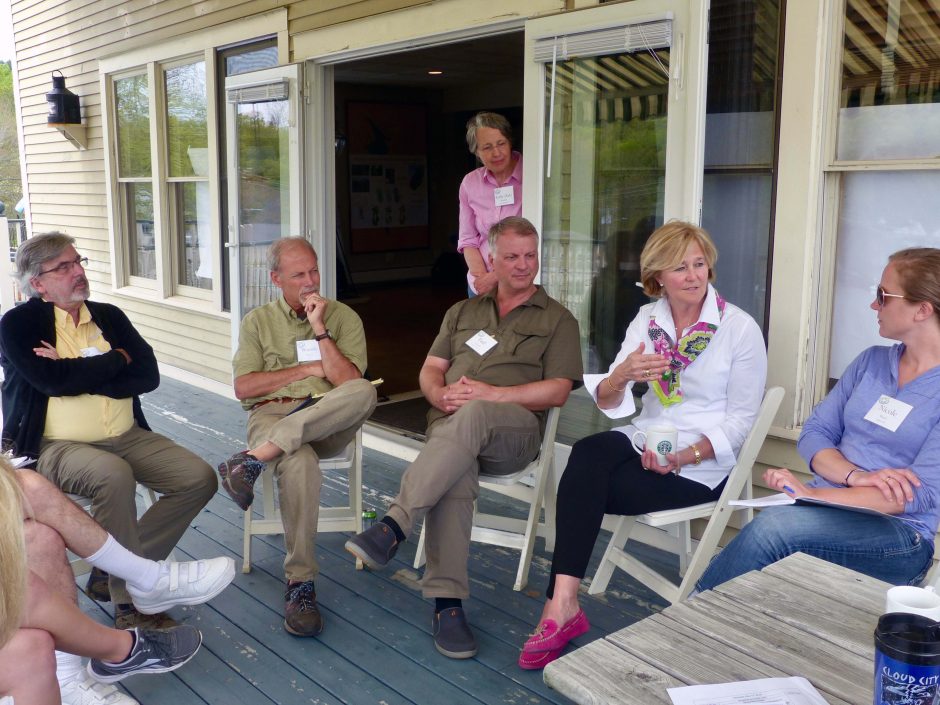
Some of the researchers engaged in a discussion with members of the Lake Sunapee Protective Association during the 2018 annual project workshop. (Credit: Midge Eliassen, via communication with source)
Do you have a childhood memory of a favorite lake you used to visit with family and friends? This is one of the most common experiences we share as Americans, and how much we care about lake ecosystems can affect how much protection we afford them. Recent research from Virginia Tech, University of Wisconsin, The Pennsylvania State University, Cornell University, Cary Institute of Ecosystem Studies, and Michigan State University models both human and natural systems to explore how humans and the environment affect each other.
An unusual approach
This collaboration began more than three years ago when an economist and a limnologist on the team happened to meet each other while traveling.
“Their flight was canceled and they ended up on the same train,” explains project lead Dr. Kelly Cobourn, who is an assistant professor of water resource policy in the College of Natural Resources and Environment at Virginia Tech. “They spent the ride talking about lakes and their value to people. Over the next few years, the team expanded to include scientists with the different perspectives and expertise needed to study complex water quality problems: a hydrologist, an agronomist, a social scientist, and additional economists and limnologists. Everyone on the team contributes a piece of the puzzle needed to understand how humans and lakes affect one another.”
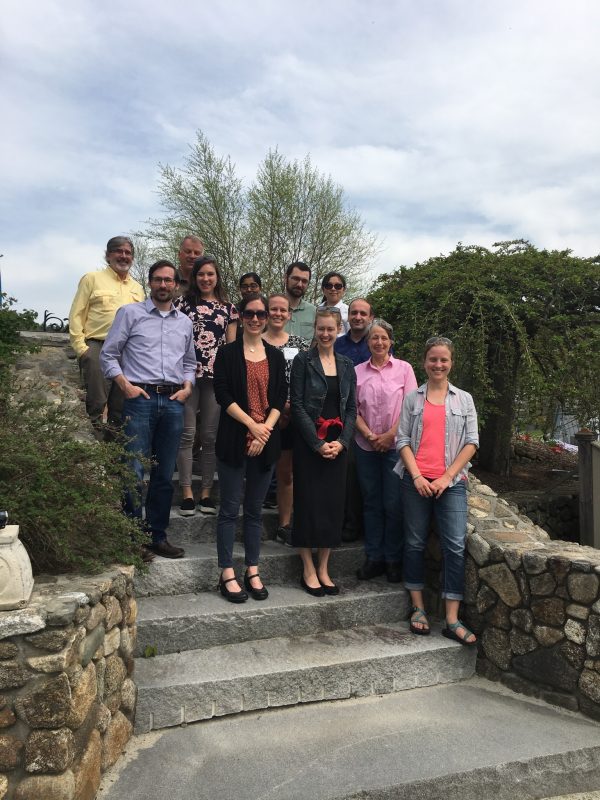
Main research group photo, 2018. (Credit: Reilly Henson, via communication)
To date, much of the research on people’s interactions with natural resources has gone in one direction. Scientists tend to ask, “what effects do humans have on the natural ecosystem?” However, the team, in this case, wanted to take a different approach.
“Increasingly, the scientific community is emphasizing the importance of studying these interactions in a more comprehensive way, by also asking, ‘how does the natural ecosystem, in turn, affect humans?’ states Dr. Cobourn.
Understanding both of these effects is challenging: answering these two questions simultaneously requires not only more data and computational power but also, the conceptual and mechanical integration of diverse types of data and analyses.
“Despite these challenges, the benefits of this research are significant, because it can teach us about complex and long-term phenomena that are hard to predict using approaches with a narrower scope,” Dr. Cobourn describes. “Our project is among the exciting endeavors to demonstrate how to implement this kind of research, and to offer ways to address the challenges that come along with it.”
Breaking it down
To help improve our general understanding of how people derive value from lake systems, and how people degrade the water quality of the lakes in these same systems by making certain choices– the team aimed to use their research to create a roadmap of the feedback loops that exist between humans and lake ecosystems. To do this, they investigated three lake catchments: Lake Sunapee in New Hampshire, Oneida Lake in New York, and Lake Mendota in Wisconsin.
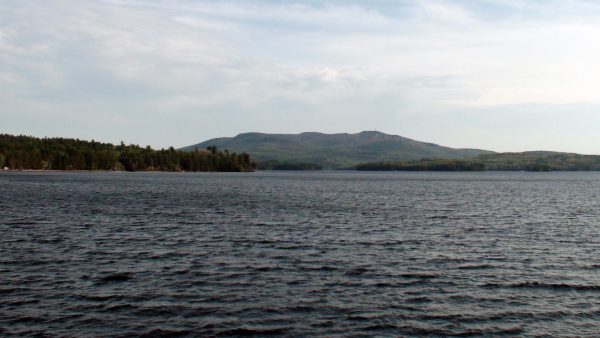
Mt. Sunapee. (Credit: Reilly Henson, via communication)
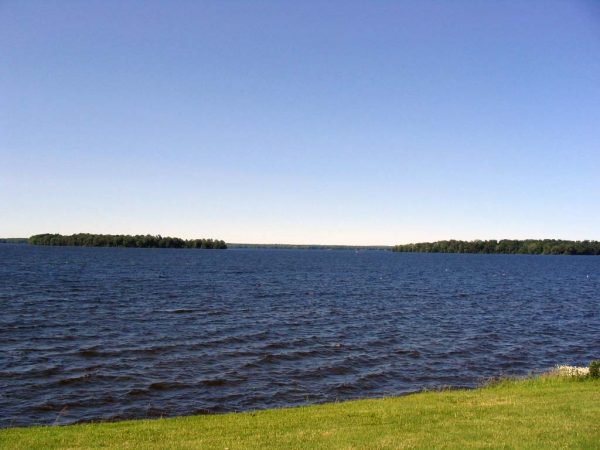
Oneida Lake from the Yacht Club in Cicero, NY, taken on June 23, 2004. (Credit: By Joegrimes at English Wikipedia [Public domain], via Wikimedia Commons)
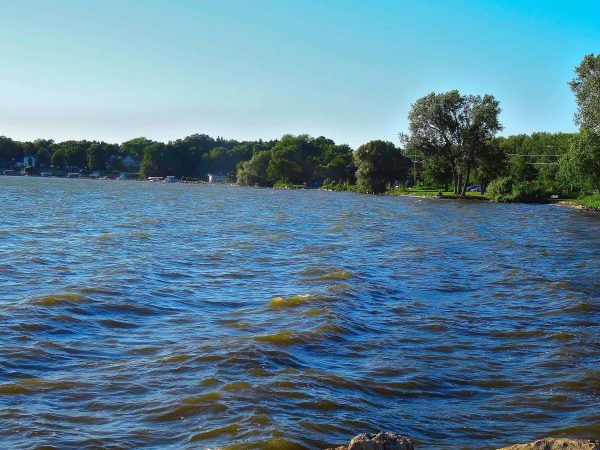
Lake Mendota in July, 2015. (Credit: Corey Coyle [CC BY 3.0 (https://creativecommons.org/licenses/by/3.0)], via Wikimedia Commons)
Using all of those criteria, the team identified Lake Mendota in Wisconsin as their eutrophic endpoint, a catchment that is both agricultural and well-developed. Lake Sunapee in New Hampshire lies in a predominantly forested catchment and represents the team’s oligotrophic endpoint.
“Several of our collaborators also researched these lakes in the past and had already established relationships with the people living in their catchments,” adds Dr. Cobourn. “Finally, we wanted to include a lake that sits between these two endpoints; we chose Oneida Lake in New York, a mesotrophic lake in a mixed agricultural and forested catchment, as our third study system.”
The researchers collected data on the transport of sediment and water to the lakes, on management and land-use decisions, and on how these and other factors change water quality, affecting chemical balances and the clarity or color of the water.
“For this project, we initially analyzed many different metrics of water quality, including nitrogen and phosphorus concentrations, oxygen availability, water temperature, and food web structure,” details Dr. Cobourn. “In the end, our primary analyses are focused on the water quality characteristics that are most likely visible to lake users and lakefront homeowners, specifically, water clarity and algal blooms (measured using concentrations of chlorophyll-a).”
The team also used more unusual types of data in the project, and existing data resources in new ways for some of the modeling components of the work.
“We used remote sensing data to define the most common crop rotations used in the Lake Mendota catchments, and we used housing sales data from a couple of different real estate databases to create a time series of prices that we used in an economic analysis,” remarks Dr. Cobourn. “For other modeling components, we collected new data. For example, our lake water quality modeling team collects data continuously from high-frequency measurement buoys on each lake, as well as ongoing data collected by citizens living on the shores of Lake Sunapee.”
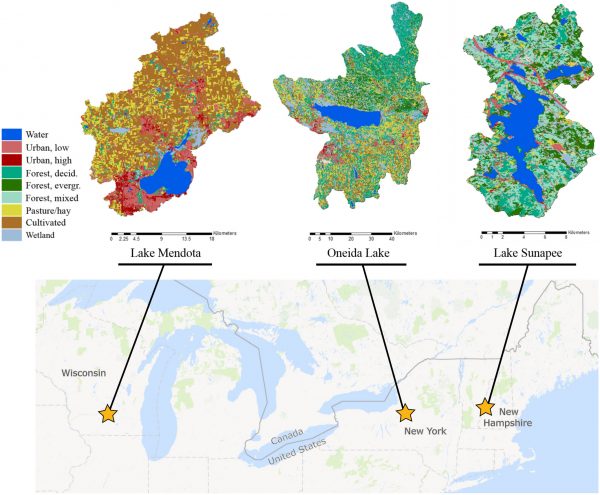
Three lake‐catchment coupled natural–human systems with surrounding land uses (Lake Mendota, Wisconsin; Oneida Lake, New York; Lake Sunapee, New Hampshire, USA). (Credit: Cobourn, et al., https://esajournals.onlinelibrary.wiley.com/doi/full/10.1002/ecs2.2209)
The team also collected historical documents published by lake associations for the social science content analysis, designed to determine how the mission of lake associations has changed over time and what types of activities these organizations engage in to improve lake water quality.
Determining what healthy lakes are worth
The researchers also focused on how water quality changes affect lakefront property values—and what changes in property values mean in terms of civic action.
“Property values are one important mechanism by which changes in water quality feed back into human awareness,” explains Dr. Cobourn. “They are a measurable, observable quantity that is meaningful for many stakeholders in lake catchment communities, and it’s easy to see how a decrease in property values might inspire a community to act. Based on previous studies, we had reason to believe that there would be a connection between water quality and property values and that this connection could be reflected in people’s behavior, perhaps in the form of lake association activities.”
For this reason, the team included property values in the study to determine how they affect behavioral changes and how strongly.
“Additionally, if we are able to measure how much more people are willing to pay for a lakeside property when water quality is high than when it is low, then we can estimate the monetary value those people place on water quality,” clarifies Dr. Cobourn. “This information is useful when it comes to evaluating the overall impact of lakes as a natural resource.”
However, one of the more important aspects of this work is the finding that people who interact with lake ecosystems develop a sense of stewardship that isn’t just about monetary value.
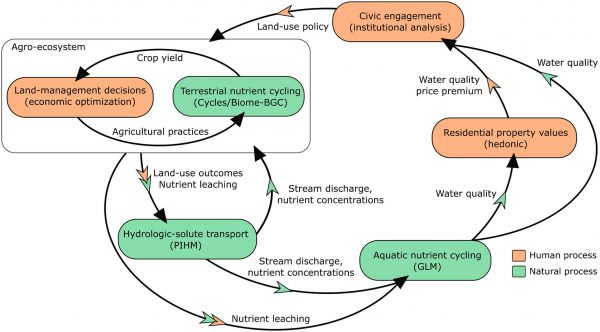
Coupled natural–human systems components and models (ovals) and the data flows that form coupling linkages (arrows). (Credit: Cobourn, et al., https://esajournals.onlinelibrary.wiley.com/doi/full/10.1002/ecs2.2209)
“Property values and other monetary measures give insights into people’s relationships with lakes, but there are many more aspects of how people connect with lakes that are hard to measure,” comments Dr. Cobourn. “People often have strong emotional attachments to lakes, which can be inspired by their own beliefs, values, and personal experiences. These attachments can foster lake stewardship and lead to a sense of community with others who feel the same way.”
The team studied this by looking at the mission statements of lake associations and examining what themes, values, and visions people share for a given lake. Using historical lake association records, and investigating how an organization’s mission and actions can shift over time, can reveal changes in the lake and the surrounding community to researchers.
This is why the interdisciplinary approach that was built into this project was so critical to the entire endeavor.
“A single scientific discipline can tell us about a portion of the human/lake catchment relationship, but because this is such a large and complex system, no one discipline alone can show us the big picture,” comments Dr. Cobourn. “For that, we have to bring together multiple disciplines, including hydrology, economics, limnology, agronomy, and social psychology and link them together. Each researcher brings their own suite of skills and knowledge to the project, and we are constantly learning from each other.”
Top image: Some of the researchers engaged in a discussion with members of the Lake Sunapee Protective Association during the 2018 annual project workshop. (Credit: Midge Eliassen, via communication with source)




Pingback: Two recent news stories about our project! – CNH Lakes